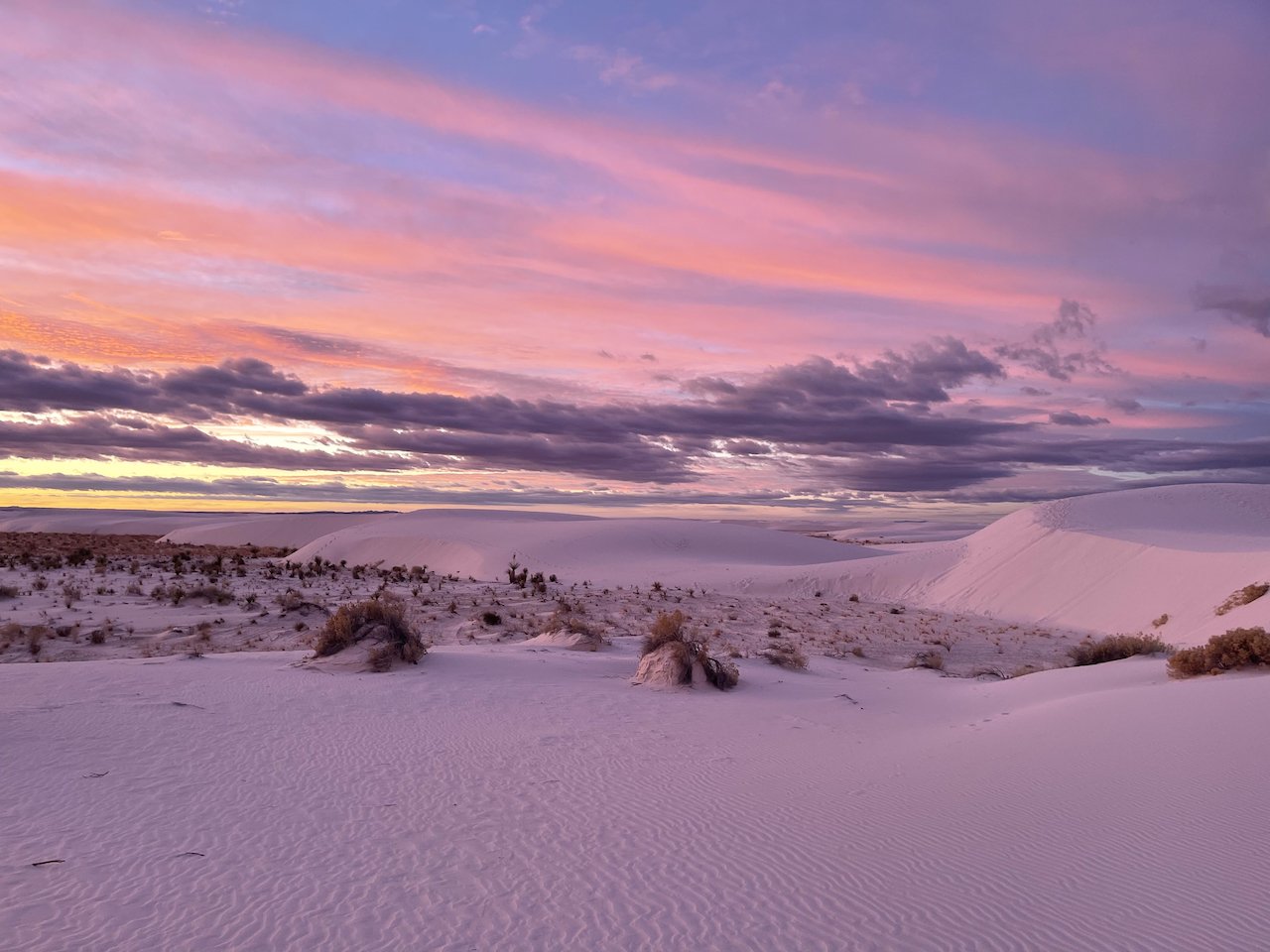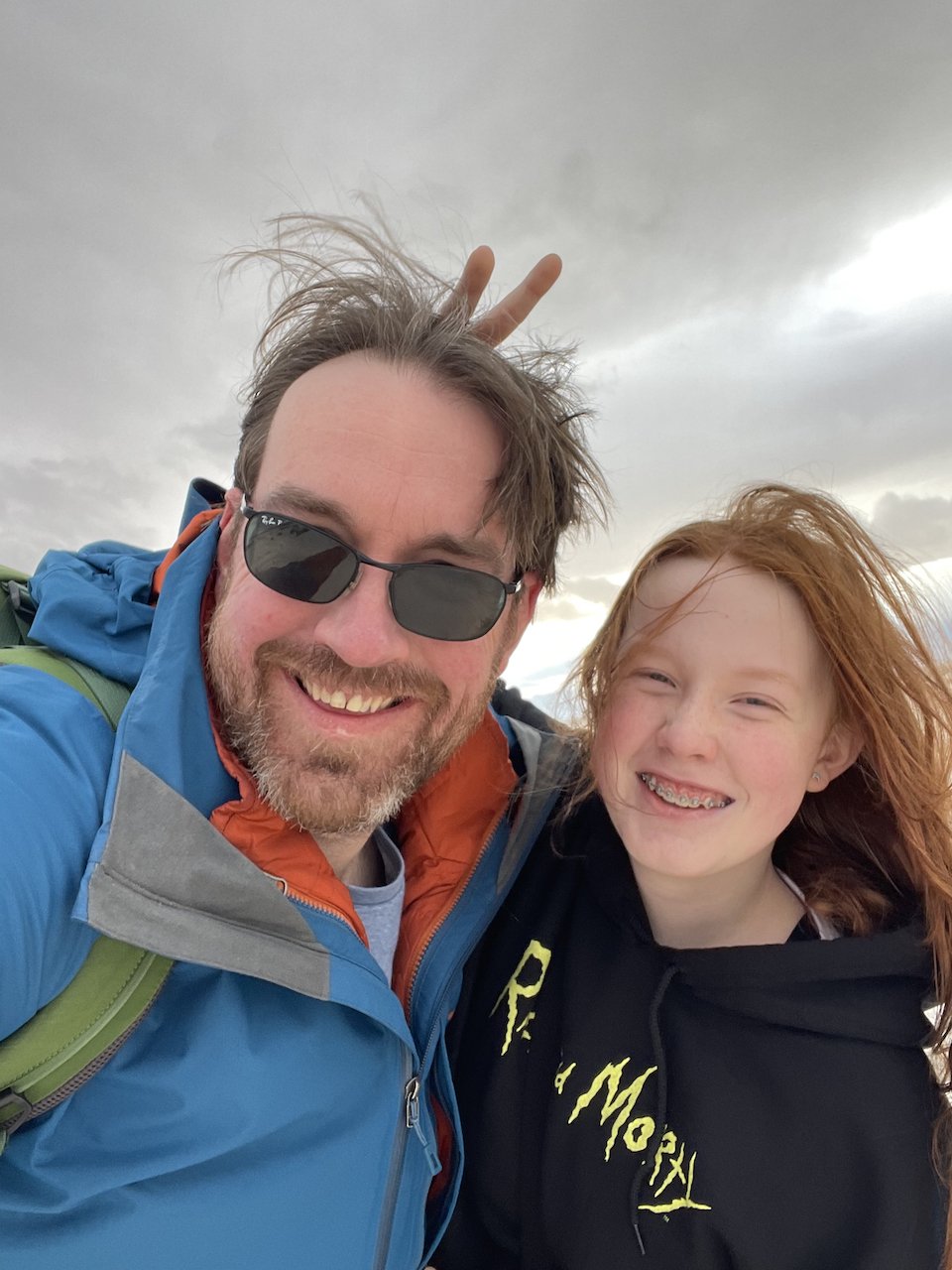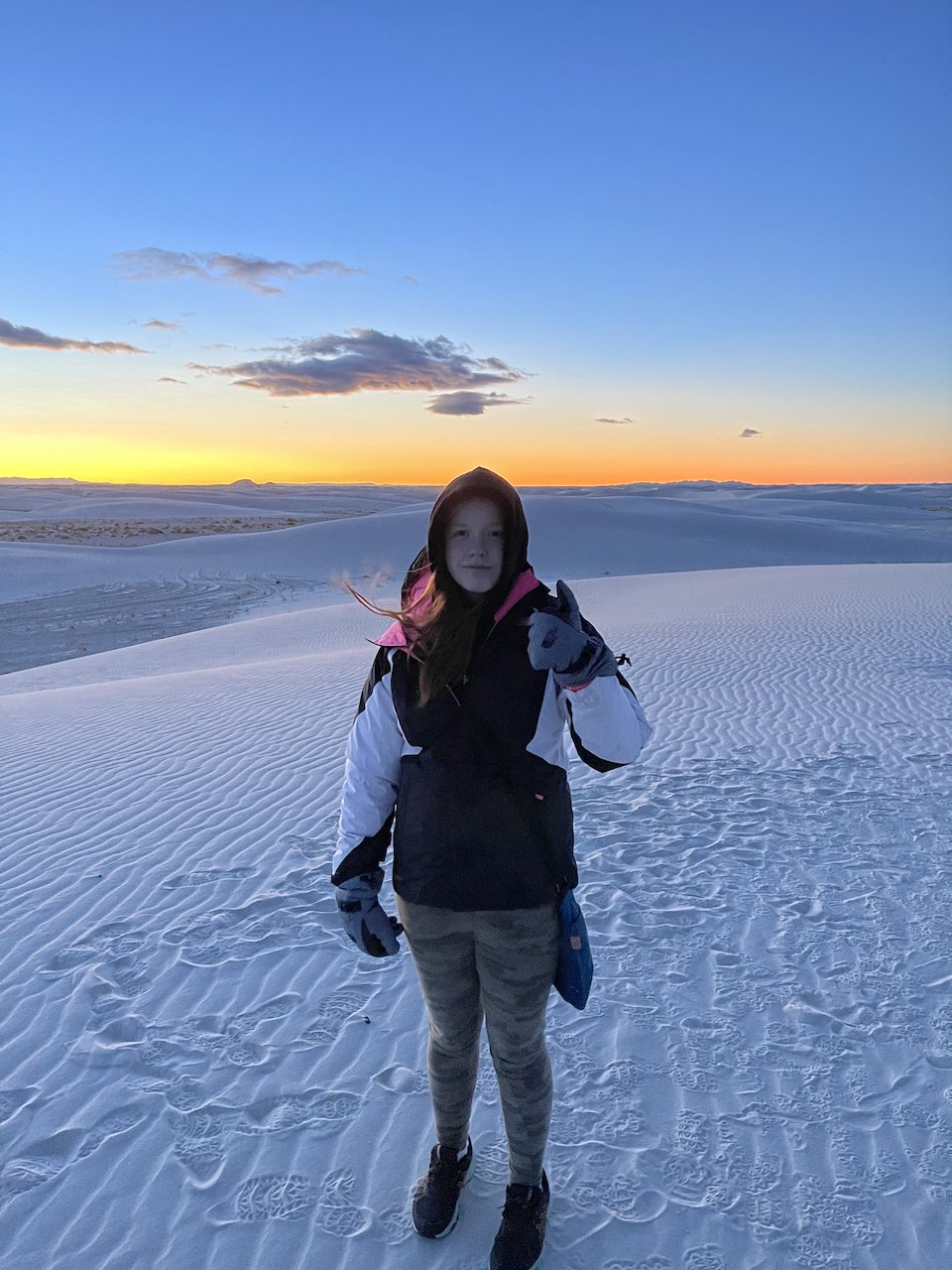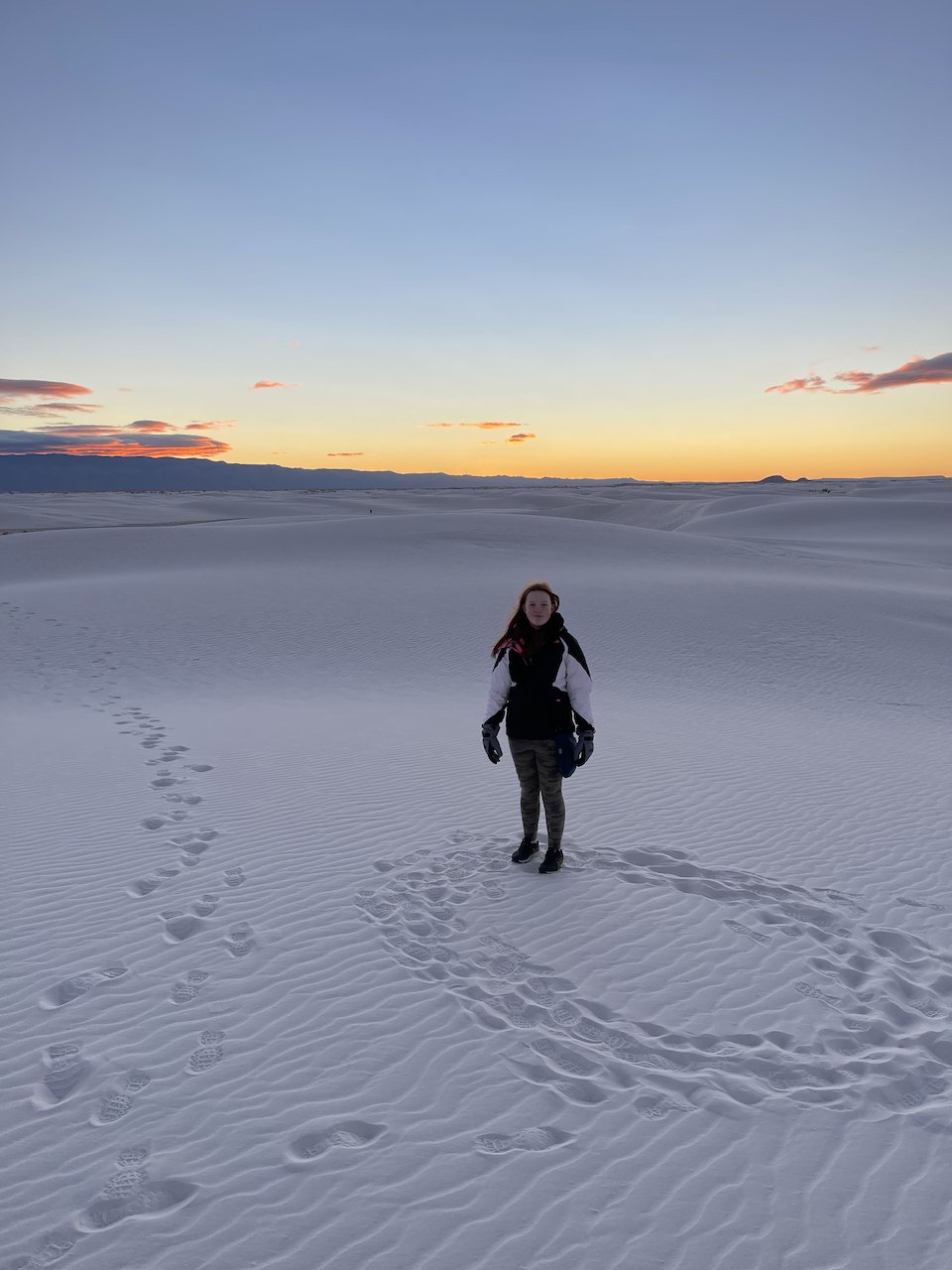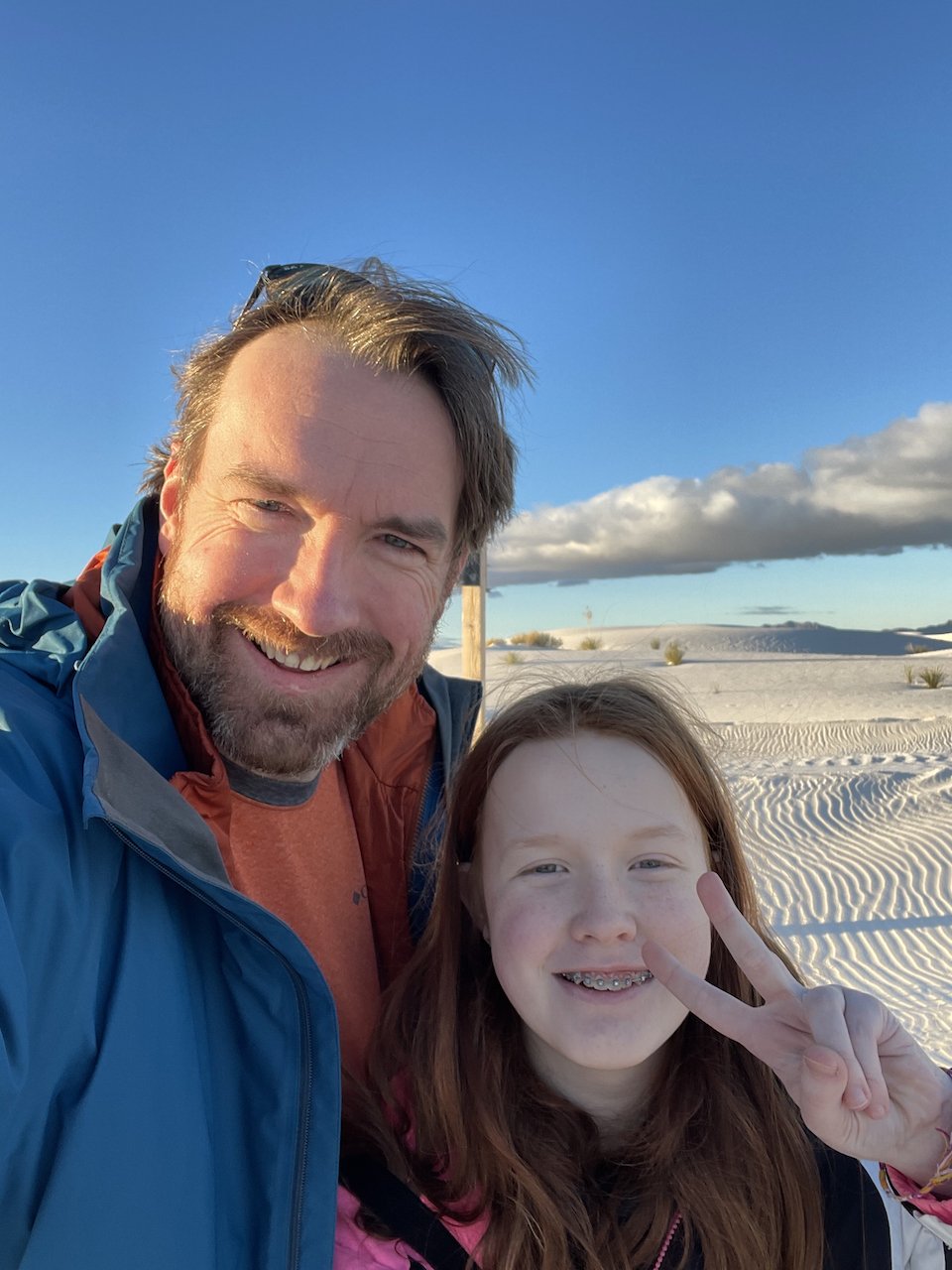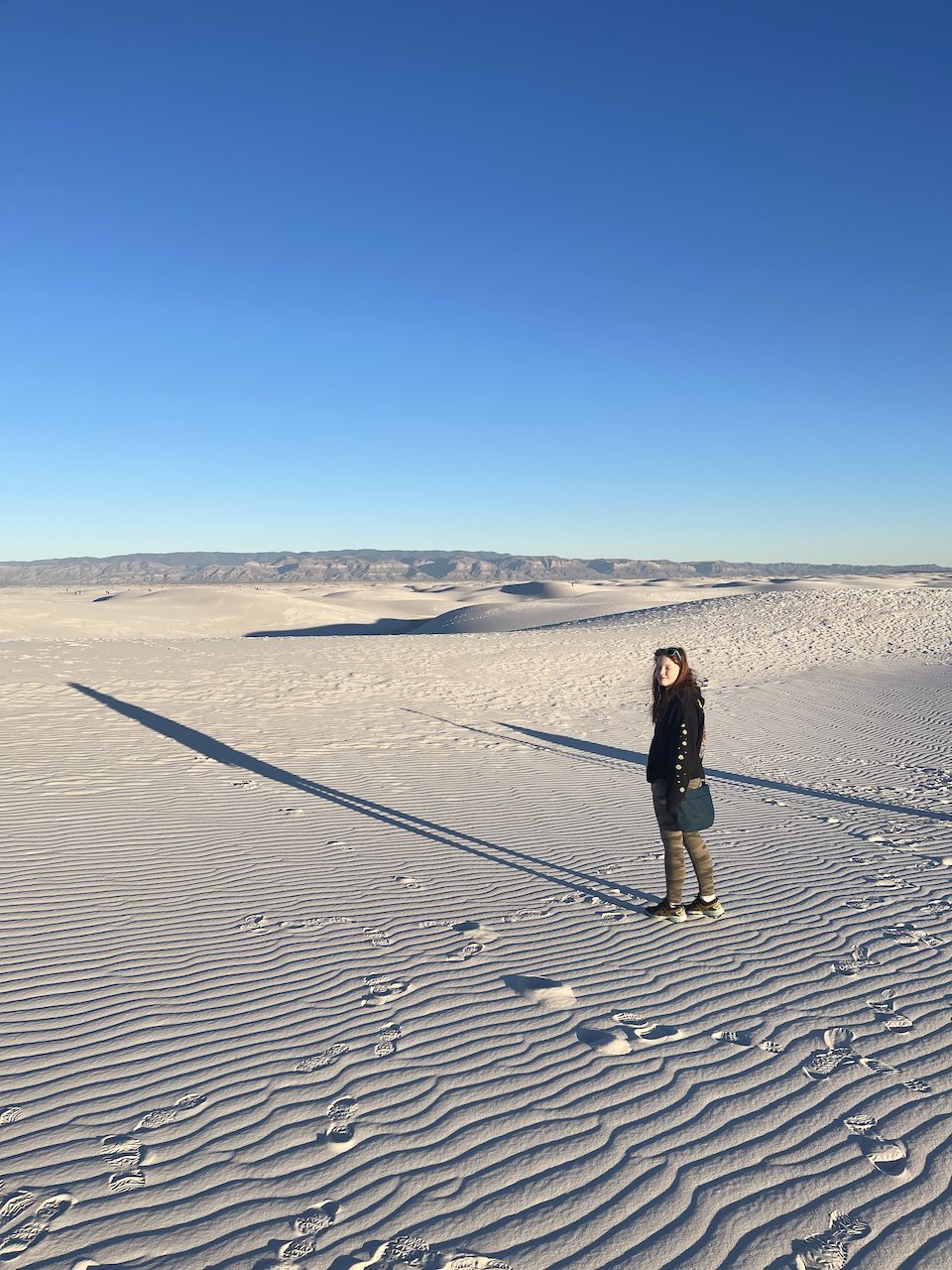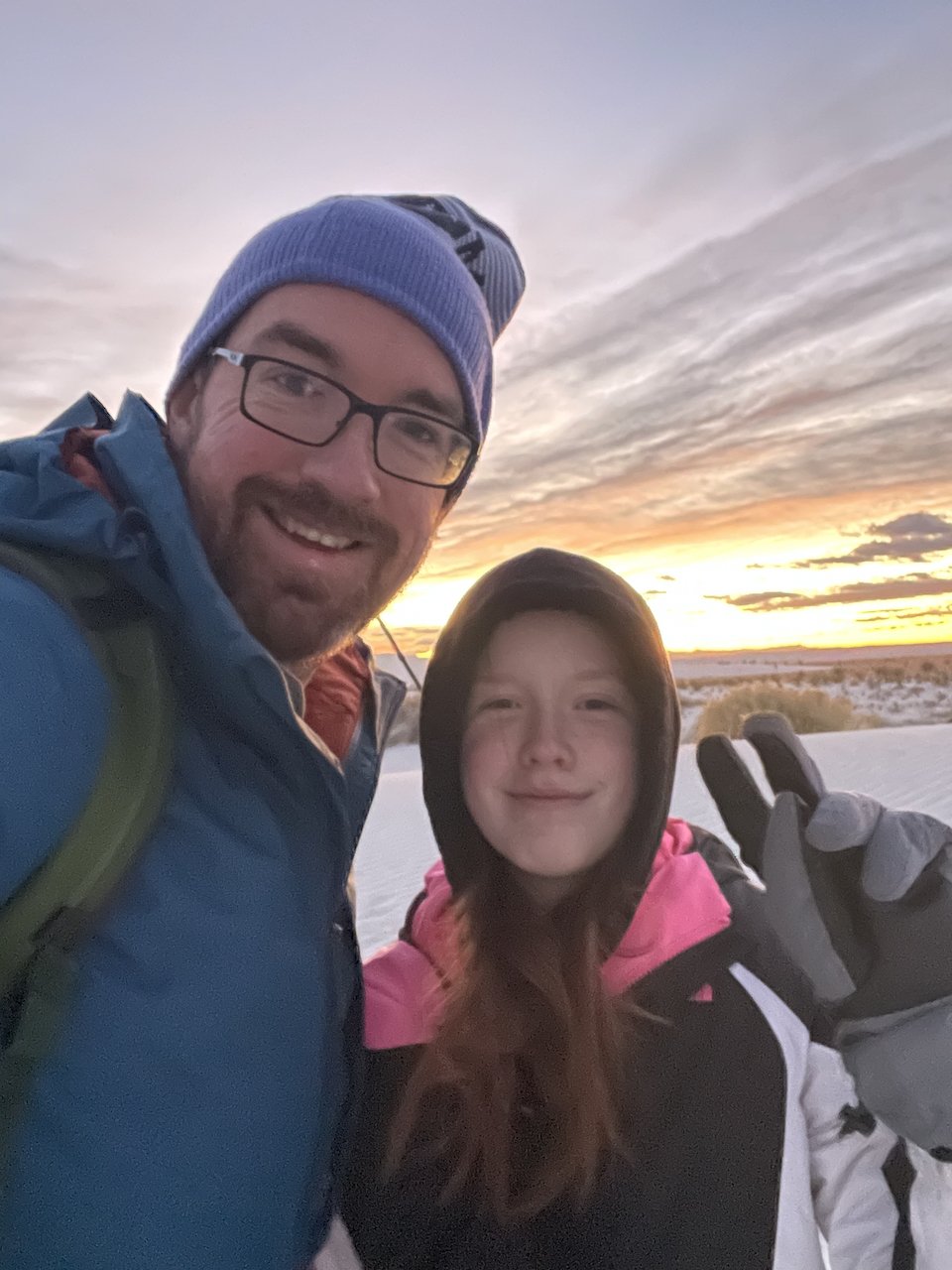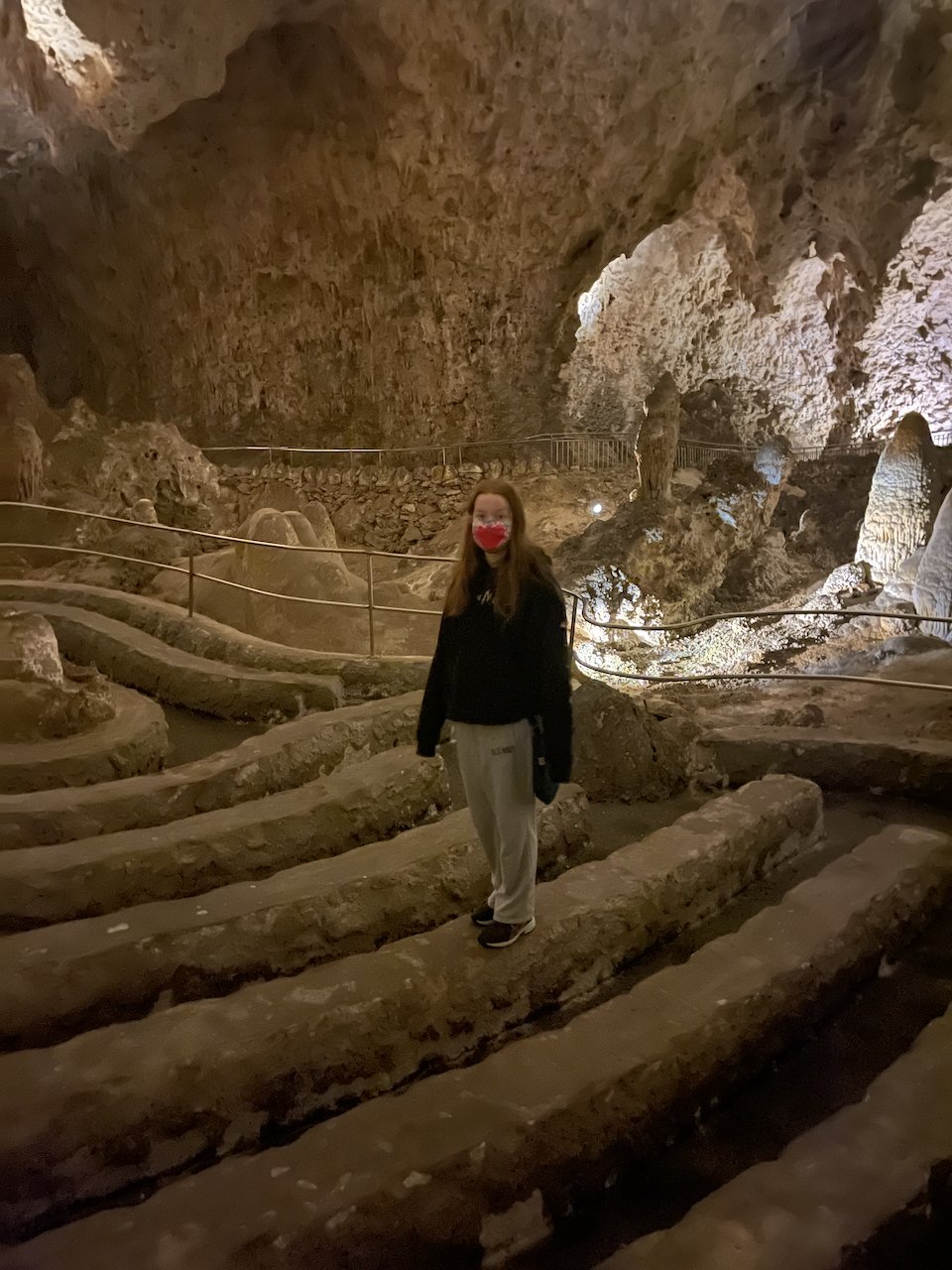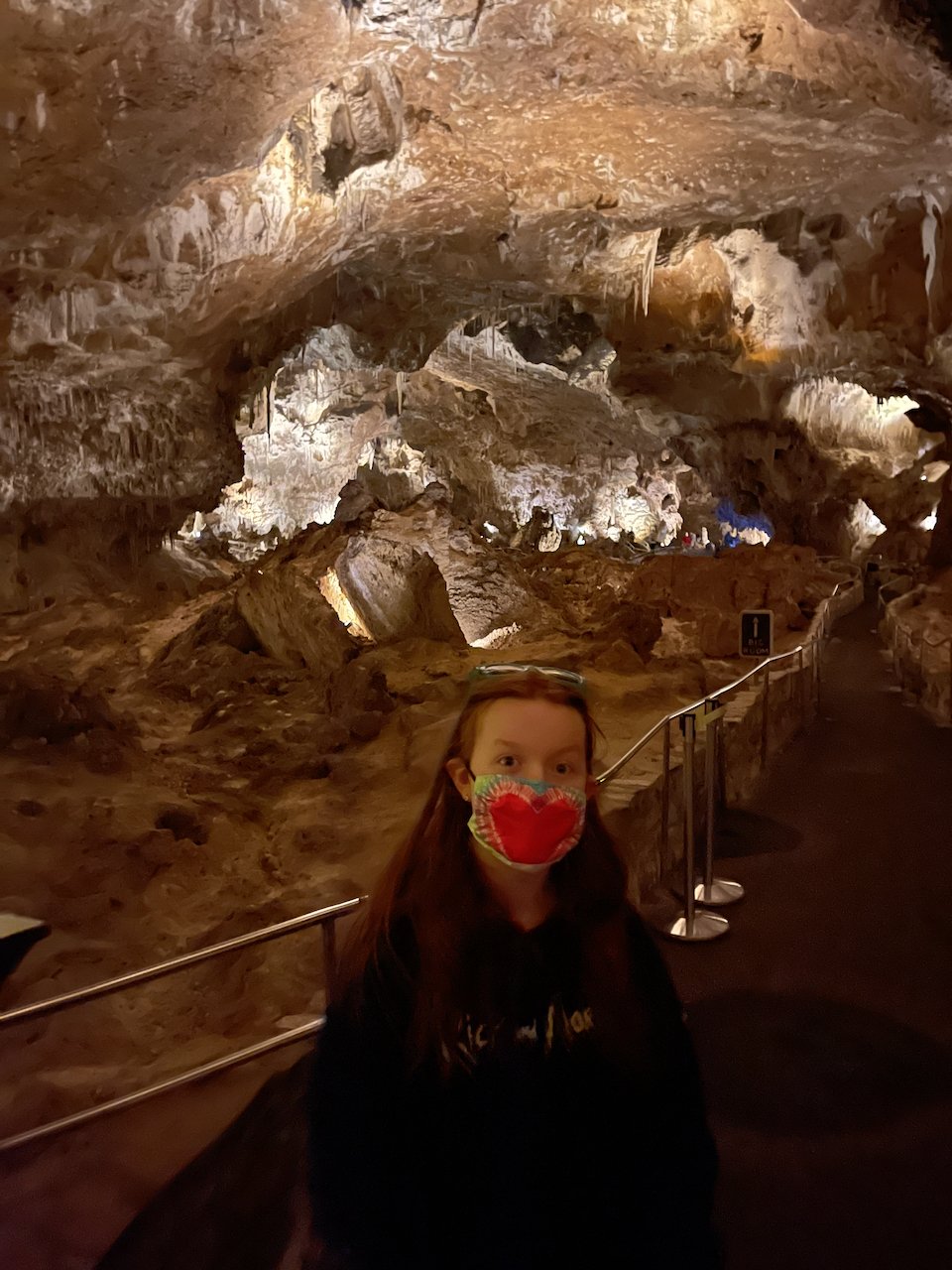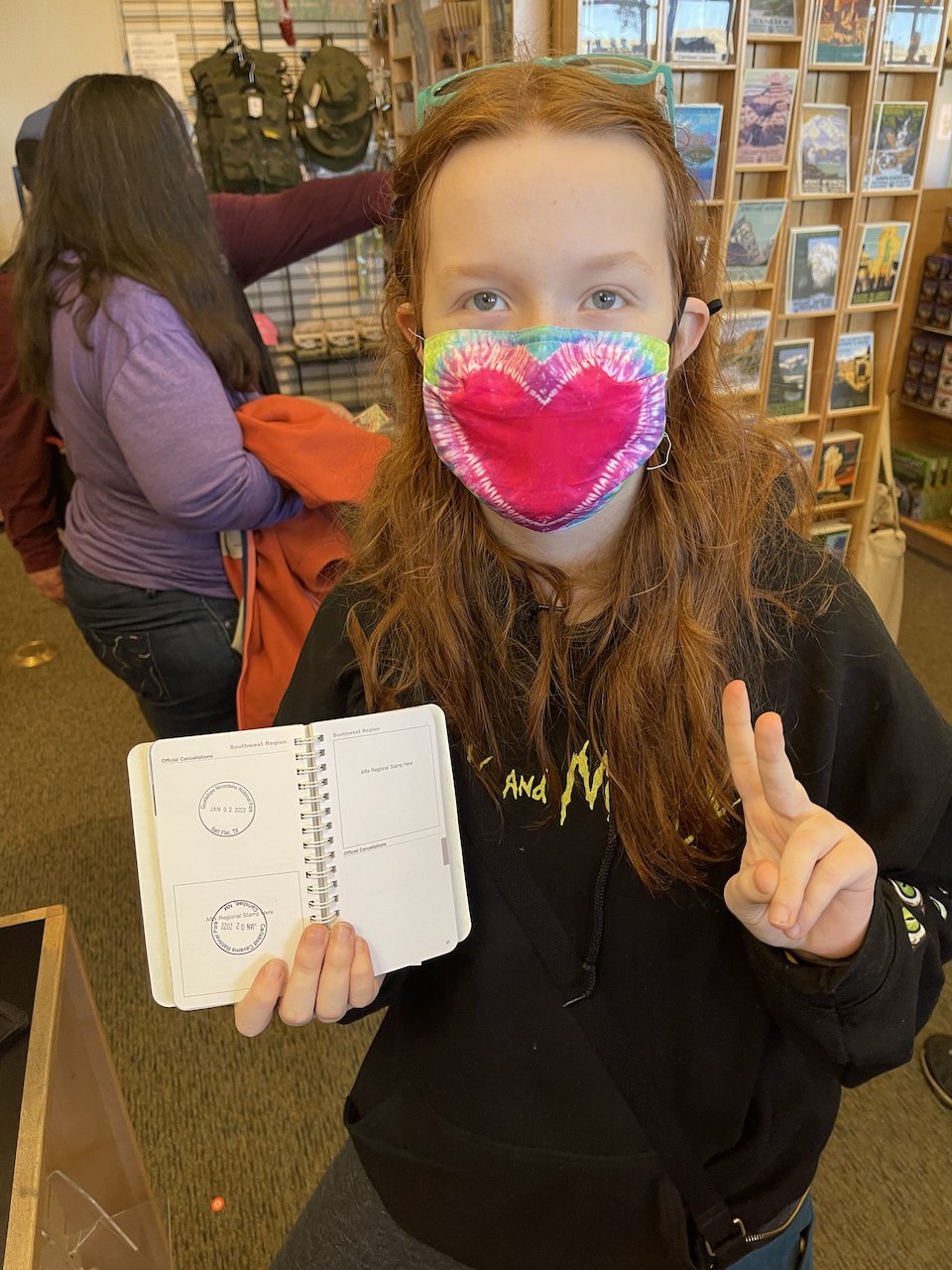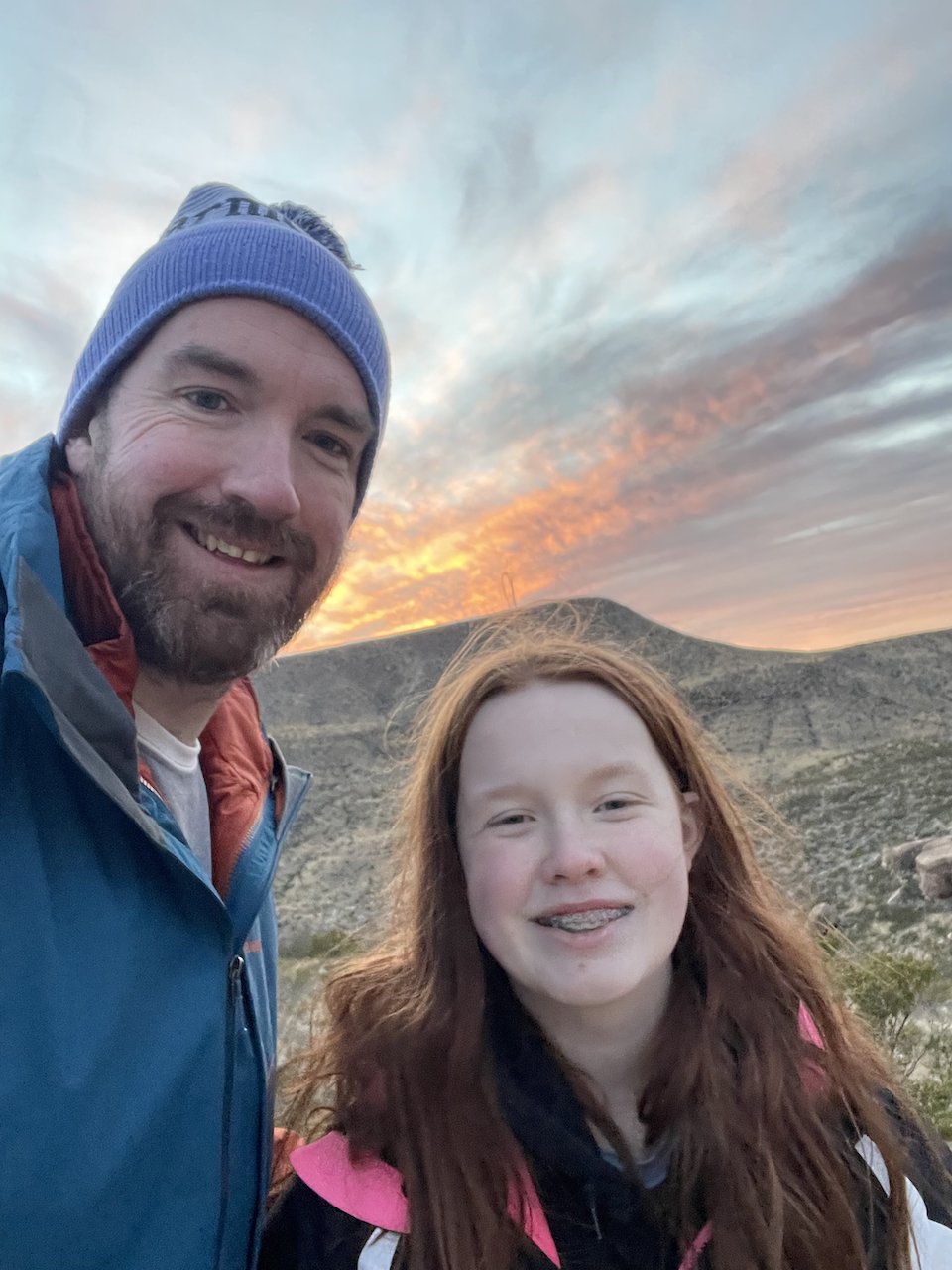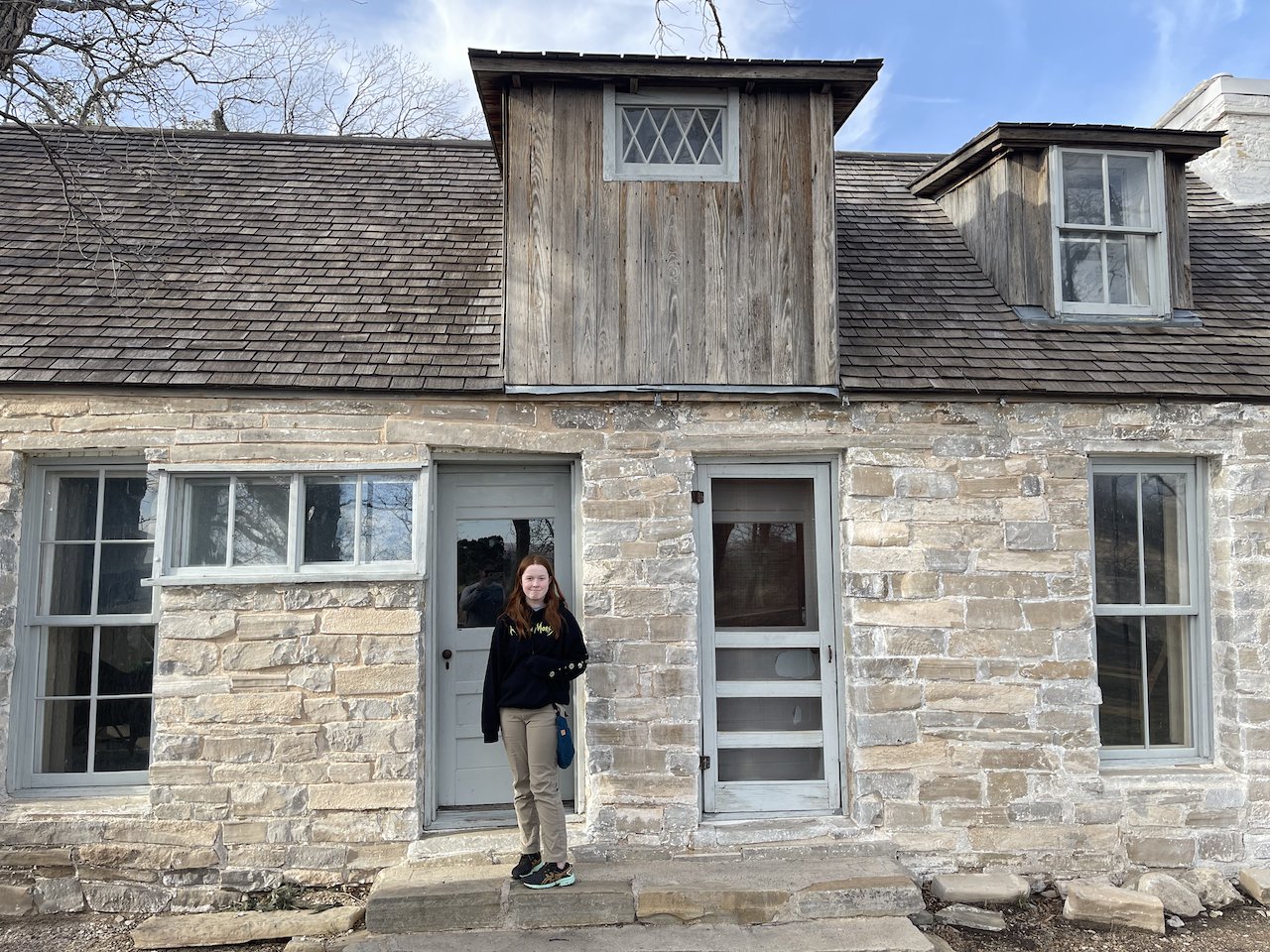White Sands, Carlsbad Caverns, and Guadalupe Mountains
Just after Christmas we made our way back out west, as now has become a tradition. We flew to New Mexico to visit three new National Parks, White Sands, Carlsbad Caverns, and Guadalupe Mountains in Texas. While the time after Christmas is always a good time to travel for us, the problem is for everyone else too and many of the parks are quite crowded.
White Sands
We started at White Sands and stayed in the small town of Alamogordo. Alamogordo is a lovely little desert town, almost surrounded by mountains. It may be best kown for is proximity to the Trintiy test, the site of the very first ever explosion of an atomic bomb. It has a good variety of nice restaurants, shops, and hotels. It made for a solid home base for our White Sands adventures.
Efforts of varying levels of success to protect the White Sands are stated as early as 1898. The area was designated White Sands National Monument by President Hoover in 1933. Most of the structures that exist today were constructed of adobe bricks by the Works Progress Administration from 1936 - 1938. In December of 2019 White Sands was redesignated as White Sands National Park.
The entire park is surrounded by the White Sands Missile Range and Holloman Air Force base. The missile range and air force base were established after the bombing of Pearl Harbor in 1941. On some occasions errant missiles have fallen within the park's boundaries. This means that during some testing the park must close down. It also means that hours to the park are limited and strictly controlled.
For our trip I successfully applied for a special use permit that allowed us early access to the park. This allowed us to get in well before sunrise, hike and be alone in the dunes as the sun came up. This was by far and away the best time of day to be in the park. In the afternoons the park was packed with people, making photographing very hard.
The park's main attraction is of course the sand dunes. These are the largest gypsum dune fields in the world. The park protects 115 sq miles of dunes. The dunes average around 30 feet in depth but of course as the wind blows and changes the dunes the height varies. The gypsum sand fill in the dunefield was formed around 7,000 - 10,000 years ago.
While the climate is classified as a cold semi-arid climate. Our trip in December was very chilly. During the day and in the afternoons once the sun had been up for sometime it was very moderate. However, in the pre-dawn hours before the sun came up it was down right cold.
We spent our four days in the park photographing in the early morning hours and exploring the park in the afternoon and evening. The nice thing about the early mornings is the wind overnight would wash clean the dune of footprints.
We did find out that this was the most popular week of the entire year for visitors at the park. By midday most of the parking lots were filled. Other than hiking the dunes the other big activity is sledding down the dunes. You can find some that are very tall and very steep and make for a fun experience. We had a great time hiking, sliding and exploring the area. Compared to some other parks it is very accessible to everyone.
Maybe the best experience was our last day and the sunrise that we had the pleasure of witnessing. The sky was only partly cloudy, and as the sun came up everything turned red. The entire sky was red, the sand reflected and glowed red. It was one of those once a year sunrises where everything is truly perfect!
Carlsbad Caverns
After we left White Sands we headed down to our next two parks. For both Carlsbad and Guadalupe Mountains we stayed in the small town of Carlsbad, New Mexico. It’s a small little town but had everything we needed for our stay. Including Danny’s Place BBQ that we found to be an excellent meal after a long day of hiking.
This is where we spent New Years eve and had a lovely dinner at a nice local restaurant.
Carlsbad Caverns National Park is part of the Guadalupe Mountains and sits in southeastern New Mexico. There are a number of caves to explore but the primary attraction and where we spent most of our time is the Show Cave.
Around 250 million years ago this area served as the coastline for an inland sea. Over time as the sea evaporated the reef that was left behind was uplifted by tectonic movement. There are at least 300 caves in this mountain range that we know of. The caves are situated on a bed of limestone above the groundwater. Over millions of years as chemicals mixed and formed sulfuric acid. This acid then rose upward and carved out the caves we see today.
While there are 118 caves within the park boundary you can only explore three of them. Most people (including us) focus on the main cave. The main cave has over 23 named rooms, and still more are being discovered today! The Big Room is almost 4,000 feet long, 625 feet wide and 225 ft high, it is the largest single chamber in North America.
The area has been protected since 1923 as a National Monument. Later in 1930 under President Hoover it gained full park status. At first the only way to visit the main entrance was to hike down 750 feet of switchbacks in the natural entrance. In 1932 the national park opened up a large visitor center building that contained two elevators that would take visitors in and out of the caverns below. The new center included a cafeteria, waiting room, museum and first aid area
You have to buy tickets in advance to either hike into the caves or take the elevators down. We had tickets booked for the early mornings for a few days in a row. It was a lot of fun walking around the different rooms.It was very warm and even more humid. The pathway is well developed and there is enough room. However, if we stayed too long and it got later in the afternoon it became very crowded.
We are looking forward to returning to the park, we did miss out on one of the main attractions of this place. If you visit in the mid summer you can go out at sunset and view the massive amount of bats flying out of the cave for the night.
Guadalupe Mountains National Park
While we spent the middle of our days in Carlsbad Caverns we spent the early mornings and sunsets in the Guadalupe Mountains. Sitting in a remote section of West Texas, efforts to protect this area date back to the 1800s. However, the remoteness of the area, and lack of any paved roads for decades hindered it gaining park status. Even though it shares the same mountain range as Carlsbad Caverns.
Archeological evidence shows that people have lived in this area for over 10,000 years. While there is evidence of habitation it is believed that only small groups of people lived in the area. The Spanish first discovered the area in the 16th century but made no attempts to settle here. In more recent times the Mescalero Apaches occupied the mountains through the mid-19th century. As western expansion grew, many easterners crossed the area.
The first European settler in the Mountains was Felix McKittrick. He worked cattle in the 1870s and built a ranch house that has been restored and you can visit today! A few other ranchers settled into the area, but there was never a substantial population. A few companies tried to mine the area, but the lack of transportation and lackluster early results lead to them abandoning their claims.
In 1921 Wallace Pratt, a geologist for an oil and refining company bought land in the mountains and built a pair of houses. In love with the land he would later gift 6,000 acres to the park service and it would become the Guadalupe Mountains National Park in 1972. The park has since expanded and today covers an impressive 86,367 acres of land.
We had very interesting weather during our time in the park. We had storm clouds and high wind many of the mornings and afternoons. We spent our time exploring the various historical sites, the restored ranch houses.
Due to the poor weather we were unable to do much of what the park is most famous for and climb to the top of Guadalupe Peak. The highest point in Texas at 8,751 feet. We did however get wonderful views of El Capitan (not the same as Yosemite).
All in - this was a whirlwind of a trip, 3 parks in about 10 days.



